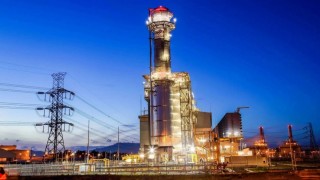Loading
Search
▼ Philippines' First LNG Terminal Sought By China And Japan
- Category:Event
Manila prepares to import the fuel as its gas fields run dry
MANILA/BEIJING/TOKYO -- The Philippines has become a new front in China and Japan's infrastructure rivalry as companies from both countries bid to build the archipelago's first liquefied natural gas terminal.
In the past few weeks, both Tokyo Gas and the state-owned China National Offshore Oil Corp., or CNOOC, have partnered with domestic companies to build the country's first LNG terminal.
The Philippines is rushing the project because its Malampaya gas field off the island of Palawan, which produces 22% of the country's energy, is predicted to run dry around 2024.
This comes as domestic electricity consumption is likely to quadruple from 2016 levels to 50 million kilowatts in 2040, according to the country's Department of Energy.
The Philippines in 2017 produced half its power from coal, a quarter from renewable energy and 22% from natural gas, for which demand is growing. The island nation will therefore be forced to import the fuel once the Malampaya gas field nearly dries up.
While leaders from both countries agreed to jointly advance third-country infrastructure projects in October, as the two countries try to shift their relationship from competition to collaboration, companies have not been able to shake off their rivalry in the field.
First Gen, a subsidiary of Philippine television and real estate conglomerate Lopez Group, signed a joint development agreement with Tokyo Gas on Dec. 5 to build LNG terminals.
"First Gen and Tokyo Gas share the common belief that the country needs clean natural gas to produce power which is not only cost-competitive but, given its flexible operations, is the perfect complement to a growing renewable energy industry," said First Gen President Giles Puno.
The project will be located about 100 km from Manila in Batangas Province, where First Gen operates four gas-burning power plants that have a total capacity of 2,000 megawatts.
The plan first calls for building a terminal nearby that will regasify and supply 3 million tons to 5 million tons of LNG imports each year to those facilities. The project is expected to cost more than $700 million, with First Gen taking an 80% stake in the operating company and Tokyo Gas investing the rest. Qatar is among the candidates for suppliers.
Having imported Japan's first LNG in 1969, Tokyo Gas has broad expertise in the field from extraction to supplying consumers. It now plans to expand its overseas business by shipping LNG for which it has the purchasing rights to countries like the Philippines if there is a surplus in the Japanese market.
CNOOC, meanwhile, has pioneered China's LNG industry since building the country's first terminal in 2006. It formed a consortium with Phoenix Petroleum Philippines in June and submitted a proposal for an LNG facility in November. Unlike Tokyo Gas, however, CNOOC does not yet have a customer for the imported fuel.
The CNOOC consortium is thought to have the political edge, however. Phoenix Petroleum founder Dennis Uy is close to President Rodrigo Duterte, former mayor of Davao City, where the company was established. The president has also taken a more conciliatory stance toward China.
An alliance of China Telecom and Uy, for example, is poised to win the bidding for the country's third major telecom license, according to sources close to the matter.
Energy Secretary Alfonso Cusi, who has authority over such projects, has said he is still evaluating the Chinese consortium's proposal.
Japan and China are also competing to support Philippine infrastructure projects. The Japan Bank for International Cooperation is likely to fund the Tokyo Gas project if it is approved. It would be the first Japanese-built LNG terminal overseas, a core part of Tokyo's effort to boost infrastructure exports.
But there is little time. Construction must start next year for the facilities to be operational by 2024. The Philippine government will evaluate the proposals on their technological level, ability to procure LNG, power demand and speed. A decision is expected in the first half of 2019.
Demand for LNG is soaring throughout Southeast Asia. Thailand and Singapore began to import the fuel in 2011 and 2013, respectively, while Indonesia is set to begin next year. Vietnam and Myanmar also preparing the necessary infrastructure.
LNG imports for 2017 tallied about 5 billion cu. meters in Thailand, about 4 billion cu. meters in Singapore and about 2 billion cu. meters in Malaysia. Even combined, however, these three countries still buy a hundredth of what Japan does as the world's largest LNG importer.
And in Indonesia, an LNG supplier to markets like Japan, local oil company Pertamina is building a terminal for imports. The amount of LNG dedicated for domestic use will fall short due to long-term contracts with buyer nations and skyrocketing consumption in the country, forcing imports to fill the gap.
Vietnam is also building its first LNG facility withe help from Tokyo Gas.
Although Southeast Asia continues to build inexpensive coal-burning power plants, new construction has come under scrutiny due to their carbon emissions. Natural gas, on the other hand, is winning favor for its smaller footprint.
By JUN ENDO, SHUNSUKE TABETA, and YUTA SUGIURA, Nikkei staff writers
- December 18, 2018
- Comment (0)
- Trackback(0)


